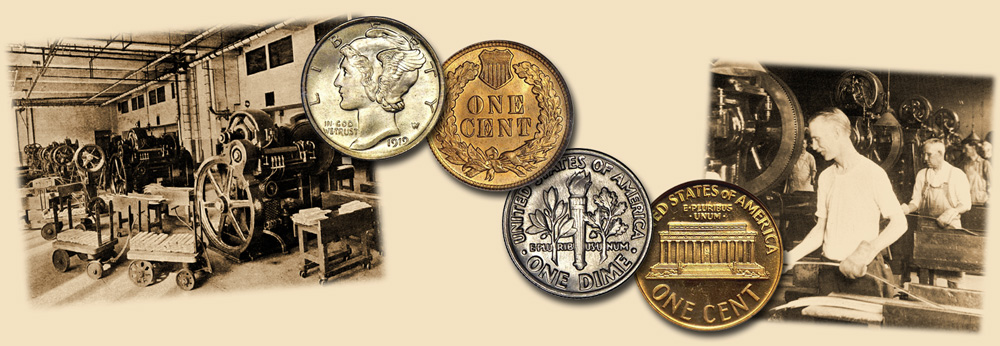
Answer: Dear L.F.:Your coin is a novelty item made outside of the mint and sold at novelty and magic stores. Typically a machinist will wear off one side of each of a pair of coins and then fix them together permanently which gives the effect of the coin you own. Cents and dimes are not the same diameter, so the edge must also be ground down to the size of the smaller coin, in this case the dime, which is why there are no reeds on the edge of your coin. I have several coins like yours in my personal collection, my favorite being a 1919 Mercury dime obverse coupled with an Indian cent reverse from a series that ended seven years before Mercury dimes were minted! While such items are neat to see, own, and wonder about, their value is typically just a few dollars, though I did step up and pay a whopping $8 for my Mercury dime concoction.
As for the use of old cents in the center of the modern clad coinage, the process used is as follows: A core of copper is attached between two sheets of copper-nickel and then bonded to each other through a process that involves a small explosion, if my memory serves me well. The blanks (planchets) are cut from this multiple sheet of metal and then become coins after they are run through the coining presses. Occasionally a coin will make it through the minting process after being cut from a sheet of metal that only has one side of the copper-nickel (the gray outer surface) bonded to the copper inner core. These errors are found occasionally for dimes, quarters, and half dollars, though the dimes are the most common in my estimation.





